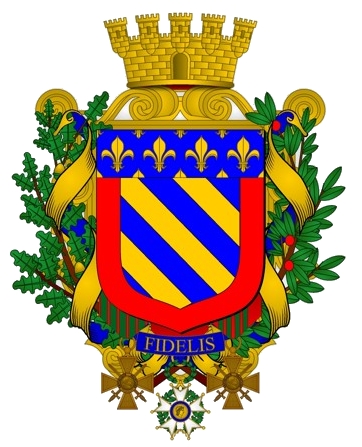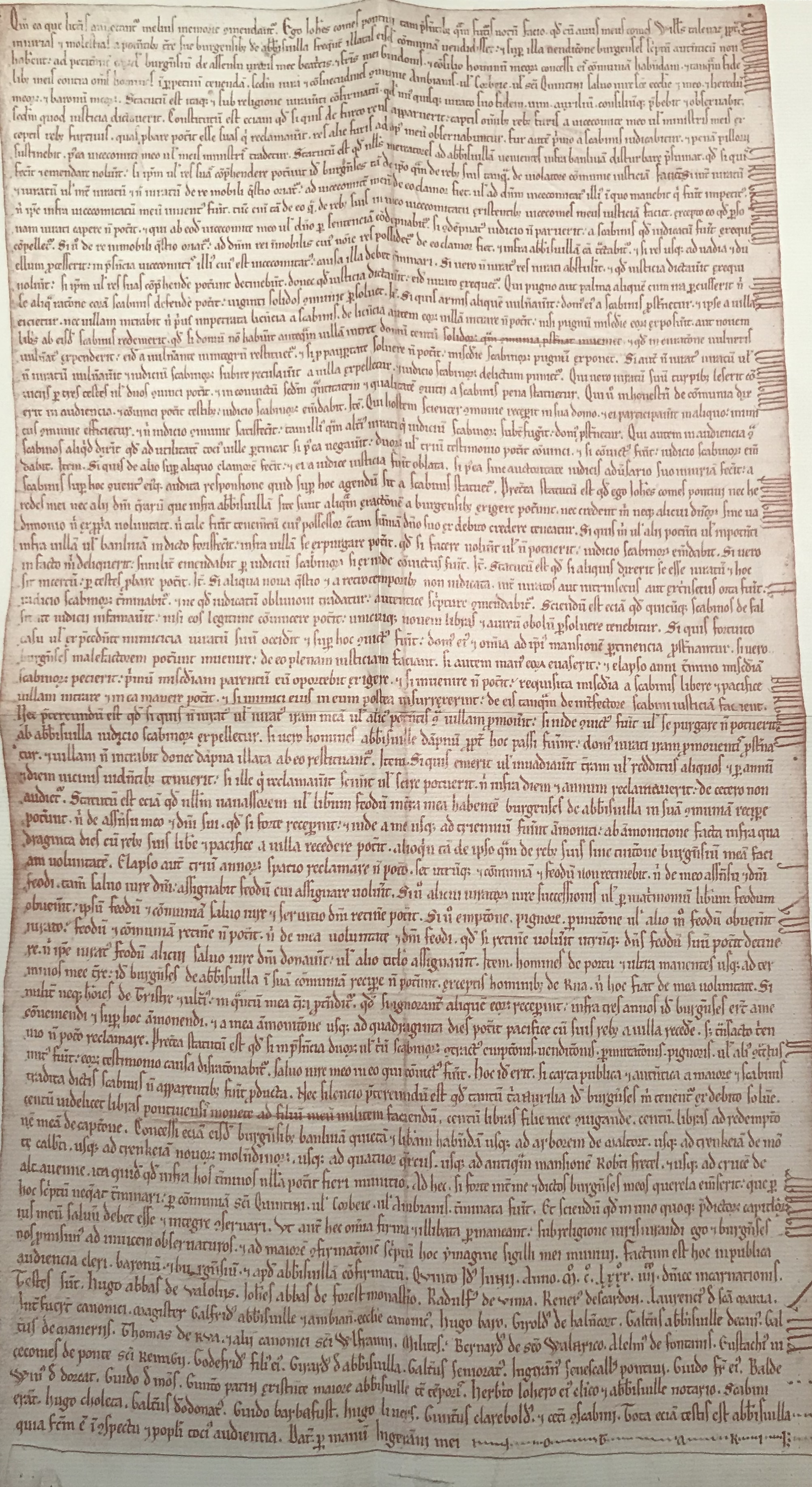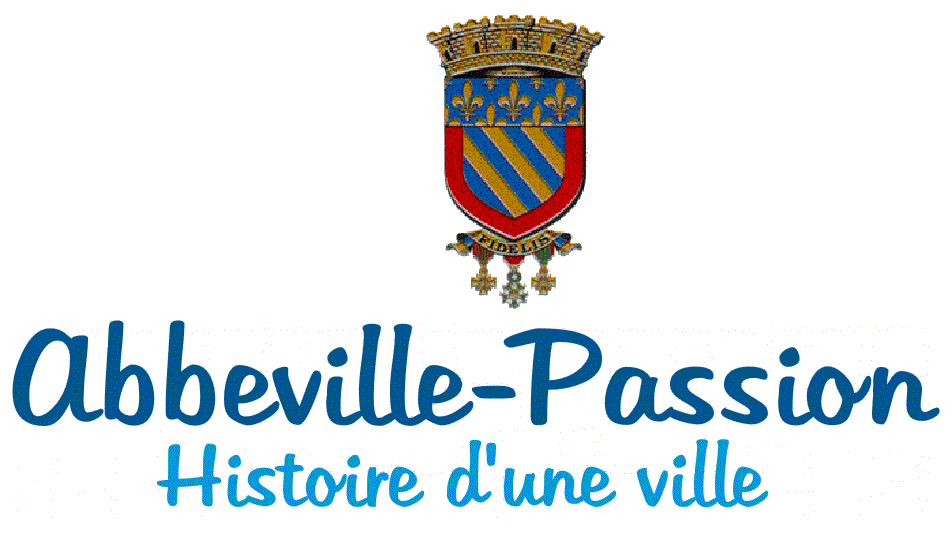-

 Monuments
Monuments- • L'hôtel de l'Alhambra
- • Monument La Barre
- • The "Baths and Shower"
- • The Bourdois or Small Echevinage
- • The Carmel
- • The Charterhouse of Thuyson
- • The Municipal Theatre
- • The bridge of the Six Moulins
- • The château de Bagatelle
- • The manufactures des Rames
- • The naked woman
- • The so-called new house "Van Robais"
- • The train station
- • The Battle Abbeville
- • The liberation of Abbeville
-

 Personalities inhabitant of Abbeville
Personalities inhabitant of Abbeville- • Albert Laurent, Musician and literary
- • André Maurois
- • Ernest Prarond
- • Father Pierre Carpentier
- • François-Jean Lefebvre, Chevalier de La Barre
- • Henri Caron, painter of the Bay of Somme
- • Jacques Boucher de Crèvecoeur de Perthes
- • Jean-François Lesueur
- • Max Lejeune and the reconstruction of Abbeville
- • Pierre François Guerlain
- • Roger Agache
- • Rose Bertin
- • The Admiral Courbet
- • Van Robais
-

 Sports
Sports- • SCA
1351413 visitors
17 visitors online
I - The historical context
The County of Ponthieu
Pagus Pontivus (= Ponthieu) was with Pagus Ambianensis (Amiens) and Pagus Vimmaus (Vimeu) the three parts constituting Civitas Ambianensis (territory of Ambiani) in the Carolingian era under Charlemagne. The latter entrusted him to his son-in-law Angilbert, count abbot of Saint-Riquier to oppose the attacks of the Vikings or the Scandinavian Normans.
In 831, we find for the first time in the writings of Hariulphe, monk of Saint-Riquier the name of Abbatis Villa in a counting of the property of the abbey of Saint-Riquier. Abbeville was later removed to the monks of the abbey by Hugh Capet, entrusting him to his son-in-law Hugues and fortified the city for the first time (see the defensive barriers of Abbeville over time).
The first to bear the title of count is the son of Hugues, Enguerran around 1026. Indeed, by his wedding with Adelvia, widow a Count of Boulogne, Enguerran can take the title and becomes the first Earl of Abbeville and Ponthieu under the name Enguerran Ier.
Although his father Hugues exercised the same functions, he never bore the title of count, but was however vassal of the King of France.
In 1090, Gui resumed the title of count without opposition from the King. The county of Ponthieu then extends from the Bresle to the Canche and from the Amiens to the sea including three divisions: Vimeu, Ponthieu and Montreuillois (at the time of Enguerran and Gui, that was modified thereafter ).
The Counts of Ponthieu rose in power gradually more or less violent and warring: Gui I to mention that he was first of all the opponent of William the Conqueror to ally himself to him. As such, he participated in the crusades with Godefroy de Bouillon in 1098.
Gui Ier dit Talvas marries a niece of Henry II, King of England, and Guillaume takes Alix for wife, sister of Philip Augustus, King of France. From there, the counts take for motto "Nunquam polluta" and weapons: three azure bands on a gold background. The three azure bands symbolize the three streams of Ponthieu: the Somme, Canche and Authie and the gold background symbolizes the fertility of the earth. In Abbeville, their residence is the Château de la Cour Ponthieu.
Guillaume Ier dit Talvas and his grandson Jean are of particular interest to us in this chapter. The first grants orally Abbevillois the right to found a municipality but it is the second who notifies it by a charter in 1184.
Communal life from 1130 to 1184.
Between the oral concession of Guillaume Talvas and the confirmation of Jean de Ponthieu, communal life is organized. From 1133, we find the name of a first master: Willerme. From there follow many others: Simon Ircus, Oilardus of Fiurno, Walterus of Manoriis, Wilelmus, Dudilo Carpentarius, Gonterus Cofiris, Gonterus of Tabaria, Petrus Patinus, probably father of Gonterus Patinus much more known on Abbeville under the name Gontier Patin, first "official" mayor of the City of Abbeville.
From 1170, there is a seal on which appears a man armed and on horseback taken from the seal of the counts of Ponthieu.
In 1178, one finds a composition of the échevinage with Gontier Patin at its head. For 54 years, no major difficulty is reported. However, the bourgeois of Abbeville feel the need to request a written confirmation from Count Jean.
II - The charter of 1184 and its contents.
"What is written remains better in the memories" evokes the Comte de Ponthieu in preamble. But it seems that this is not the only reason for drawing up the charter. It is Gontier Patin himself who seems to be asking for it to protect certain gains. It was written in public assembly in the presence of clerics, barons, bourgeois and was confirmed on June 09, 1184.
The charter of Abbeville was then confirmed several successive times by the different Counts of Ponthieu, Kings of France and England.
Confirmed it:
- Philippe Auguste, King of France in 1221
- Edward I, King of England whose wife Eleonore was Countess du Ponthieu in 1272 and 1288.
- Isabelle, Queen of England and Countess of Ponthieu in 1337
- Jean Le Bon, King of France in 1350
- Edward III, King of England in 1361
- Charles V, King of France in 1369
- Charles VI, King of France in 1380
- Henry VI, King of England in 1424
- Charles VII, King of France in 1436
- Louis XI, King of France in 1463 and 1476
- Charles VIII, King of France in 1483
- Louis XII, King of France in 1498
- Francois I, King of France in 1514,
- Henry III, King of France in 1575
- Louis XIII, King of France in 1610,
- Louis XIV, King of France in 1654
- Louis XV, King of France in 1718 and
- Louis XVI, King of France in 1779
The confirmation of King Charles V in 1369 is particularly interesting because it rewards the fidelity and courage of the Abbevillois and their mayor Firmin de Touvoyon who drove the English trying to take possession of the county. Thus, an order of the King made known to the Abbevillois that the Town and County would never be dissociated from the domain of the Crown and that the inhabitants of the county would be the immediate subjects of the King of France. The King, in recognition, authorizes the city to bear on its weapons the sign of its loyalty and its fidelity, that is to say the bandeau azure sprinkled with fleurs-de-lis d'or. Subsequently was added the motto FIDELIS. (see The coat of arms of Abbeville)


Category : - Events
Page read 8191 times
Copyright
Images and texts are not royalty-free.
If you want to use one of the photos or texts on the site, do not hesitate to contact us and explain how you intend to use them.







